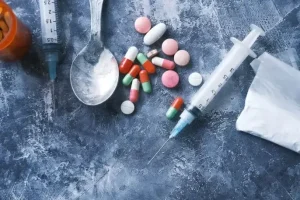
In many countries there is still limited availability of naloxone even in medical settings, including in ambulances. On the other hand, some countries have already made naloxone available in pharmacies without prescription. Males, people of older age and people with low socio-economic status are at higher risk of opioid overdose than women, people of young age groups and people with higher socio-economic status.

Drug Overdose Deaths: Facts and Figures

Use during pregnancy can also lead to miscarriage and low birth weight. When medications are used to treat opioid withdrawal, they themselves do not cause withdrawal due to the small doses that decrease over a short period of time. Death following opioid overdose is preventable if the person receives basic life support and the timely administration of the drug naloxone. Naloxone is an antidote to opioids that will reverse the effects of an opioid overdose if administered in time.

Can a person overdose on prescription opioids?
After intake, opioids can cause euphoria, which is one of the main reasons why they are taken for non-medical reasons. Opioids include heroin, morphine, codeine, fentanyl, methadone, tramadol, and other similar substances. Due to their pharmacological effects, they can cause difficulties with breathing, and opioid overdose can lead to death. Opioids are a class of drugs naturally found in the opium poppy plant. Some prescription opioids are made from the plant directly, and others are made by scientists in labs using the same chemical structure.

Early stage: Stopping opioids and cravings
Over time, people who use opioids (for pain or other reasons) develop a physical dependence on the drug, meaning that if they stop taking opioid addiction treatment opioids, they experience withdrawal symptoms. At that point, some may take opioids to put an end to withdrawal symptoms rather than to achieve pain relief or a high. Importantly, physical dependence with tolerance and withdrawal alone do not mean someone has an opioid use disorder. If you’re taking opioids and you’ve built up a tolerance, ask your healthcare professional for help. Other safe choices are available to help you make a change and keep feeling well. Don’t stop opioid medicines without help from a healthcare professional.
- This can decrease the amount of oxygen that reaches the brain, which can result in coma, permanent brain damage, or death.
- They may have a problem with controlling themselves, or have impulse control.
- Without treatment, a person may still experience mild withdrawal symptoms for months or years after stopping opioid use.
- How long it takes to taper off your medicine depends on the type and dose of the opioid you’ve been taking and how long you’ve been taking it.
- The opioid epidemic has claimed hundreds of thousands of lives in the United States over the past two decades, devastating families and communities around the country.
- Some opioid users who believe they need a bigger supply find illegal ways to get opioids or start using heroin.
Aftercare and Support Systems
- Those who have become physiologically reliant on opioids will suffer withdrawal symptoms upon abrupt cessation of use.
- After the first use, you may come back to the substance occasionally.
- The opioid blocker works mostly in the stomach to prevent constipation.
- But doctors don’t know when the brain has reset itself and is no longer at high risk for substance use.
But after that, with behavioral treatment and or medication assisted treatment to help them along, you can rework these pathways, you can undo some of these four lane freeways that have been paved. That can last up to about 18 months where people may have depression, inability to pay attention, may have cravings, that type of thing. But one thing that’s really wonderful about treatment, behaviorally approached and/or medically approached is that these can be reset and a person’s neural pathways can be restored. But they’ll always have that possibility of returning to use again if they reintroduce that drug. Then there’s this new pathway where a person may not be able to use their prefrontal cortex in a way that enables them to do normal risk taking analysis.
Opioid Withdrawal
If you’re regularly using opioids, your body will eventually adjust and depend on the drugs in order to function properly. Though everyone is different, your odds of becoming dependent go up the longer you take opioids. Addiction is a condition where something that started as pleasurable now feels like something you can’t live without. Drug addiction is defined as an out-of-control feeling that you must use a medicine or drug and continue to use it even though it causes harm over and over again. Opioids are highly addictive, largely because they trigger powerful reward centers in your brain.

Due to the toxic nature of these substances, users may develop brain damage or sudden death. Two groups of synthetic drugs — synthetic cannabinoids and substituted or synthetic cathinones — are illegal in most states. The effects of these drugs can be dangerous and unpredictable, as there is no quality control and some ingredients may not be known. Addiction and opioid use disorder, unlike tolerance and dependence, are terms that describe an illness. People often use these words interchangeably, but use disorder is the term preferred by the American Psychiatric Society. Additionally, many people feel shame or fear judgment when requesting help in person.
